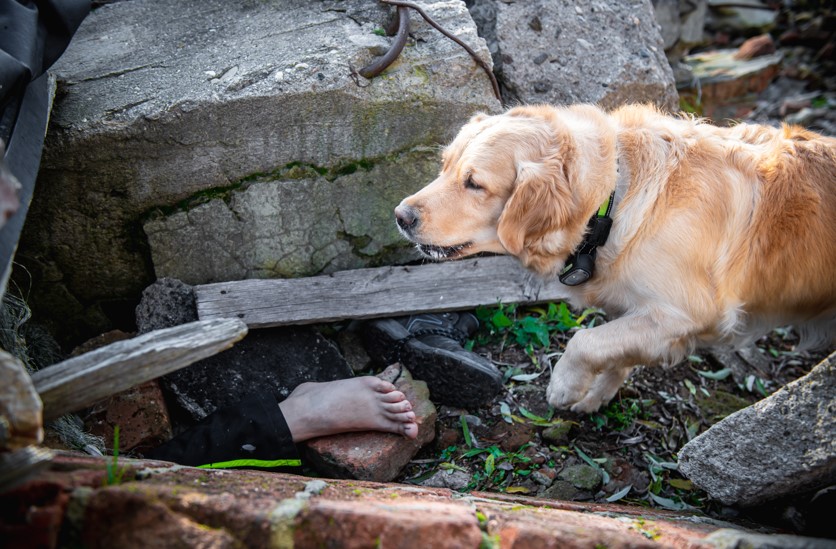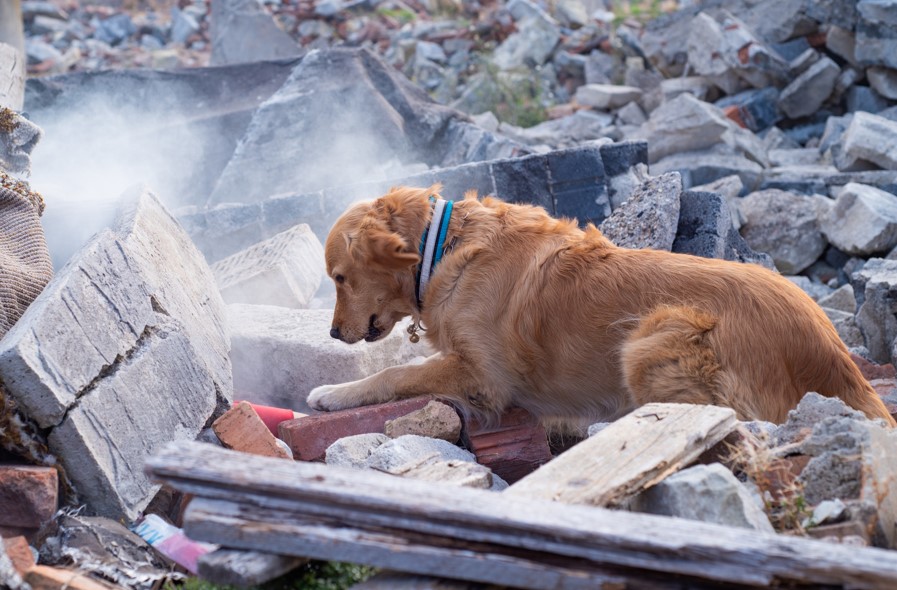
Technology has attempted to replicate the remarkable sense of smell of dogs, but in the aftermath of a major earthquake, such equipment is ineffective. Due to the dust, noise, vibrations, and electromagnetic fields produced by excavating machines, the detection equipment is easily disrupted, requiring rescue work to stop in the surrounding area, which is not feasible. In contrast, a well-trained search and rescue dog is not affected by distractions, including other rescue crews and spectators, and is able to locate people trapped under rubble or dirt. With more frequent natural disasters, the need for trained search and rescue dogs is greater than ever. They have saved countless lives, especially after earthquakes.
Search and rescue dogs are also crucial in other emergency situations, such as plane or train crashes and gas explosions that result in collapsed buildings. Private initiatives may need to step in if the government does not provide training for these dogs. They have to search intensely for the scent of people trapped under rubble or other materials and must not be distracted by anything. The dog signals its handler when it has located a victim by showing the highest concentration of scent, which the handler must then determine if the person is alive or dead based on the dog's behavior.
The success of a search and rescue dog also depends on its drive to find people, which can be developed through training that utilizes its hunting drive. The type of alert used must be suitable for the dog's personality and behavior, and some common alerts used in rubble searches include:
Barking: Dogs that bark easily may start barking at a scent clue. This happens when the dog is frustrated and unable to reach the victim quickly. Barking is not enough to be considered a real alert, and the dog must also indicate the location of the highest human odor concentration by pawing, scratching, or putting its nose in the rubble.
Bringsel alert: The bringsel alert is commonly used in area searches. However, if the same dog is trained to use a bringsel in wilderness search, it should only pick it up when it makes contact with the victim. In rubble, contact with the victim is rare, so the dog must give an alert without contact. Using the bringsel alert in both rubble and wilderness search may lead to problems and false alerts.
Recall alert: The recall alert involves the dog walking back and forth quickly between the handler and the scent clue, leading the handler to the location. The dog uses a special behavior to show that it has found the scent of a victim. Again, the recall alert must be accompanied by the dog's pawing, scratching, or putting its nose in the rubble to indicate the exact location of the highest human odor concentration.

Pawing: When a dog finds a strong human odor, it may scratch or bite the rubble in an attempt to penetrate it. This behavior is important because it helps the dog indicate the exact location of the victim. Some people are concerned that dogs may hurt themselves while pawing, but this is rare as dogs can judge their strength.
Behavior and postures: A dog's body language is a good indication that it has found something. When a dog is interested in a particular spot in the rubble and refuses to leave it, it may be because it has found a strong human odor. The dog's body expressions, such as its walk, posture, ear stance, and tail wag, are also indicators. The dog may also sit or lie down at the location of a strong human odor. However, this alone is not enough and the dog must still indicate the exact location by pawing or scratching in the rubble.
It's important for the safety of search and rescue dogs that they stay in place when commanded to lie down. However, a real-life situation in 1980 Italy shows that handlers must always be aware of their dog's communication. After a long search in the rain, a handler laid his dog down in a seemingly safe building for some rest. But after a few minutes, the dog came back to the handler, which was unusual for the well-trained dog. The handler then discovered a crack in the floor where the dog had been lying. This incident highlights the importance of paying attention to your dog's instincts, as the dog was able to sense the upcoming tremor that was unnoticed by people.
Q: What are SAR dogs?
A: SAR dogs, or search and rescue dogs, are highly trained dogs that assist in disaster response efforts. They use their incredible sense of smell to locate missing persons and bring them to safety.
Q: What should be taken into account when looking for a breeder for a new SAR dog?
A: A successful match depends on finding the right breeder for the job. Interviews should be conducted to make sure the pup is up to the standards needed for SAR work - seeking someone who specializes in working dogs as opposed to show breeds is recommended.
Q: How do we ensure retired SAR dogs stay comfortable and happy?
A: Retired SAR dogs need regular vet visits, a safe environment, nutritious meals, and activities to keep them occupied. They deserve lots of love and respect - just like they did while they were working!
Q: What is the history of search and rescue dogs?
A: The use of search and rescue dogs can be traced back to the use of Red Cross dogs during World War I. They were initially trained to bark at the location of wounded soldiers, but this method was changed to picking up a designated item. Today, search and rescue dogs have been used in various disasters around the world, such as earthquakes, and have proven to be a valuable asset in saving lives and recovering bodies.
Q: How do SAR dogs locate missing persons?
A: SAR dogs use their keen sense of smell to quickly locate missing persons. They work closely with their human handlers to search areas that would be too dangerous or time-consuming for human teams to search.
Q: What breeds are best suited for search and rescue work?
A: Many breeds can be trained for search and rescue, but some of the most commonly used breeds include German Shepherds, Labrador Retrievers, Golden Retrievers, and Belgian Malinois. The breed chosen will depend on the specific requirements of the search and rescue organization, as well as the individual dog's temperament and ability.
